CH. 5 Marine Biology
1/48
There's no tags or description
Looks like no tags are added yet.
Name | Mastery | Learn | Test | Matching | Spaced |
|---|
No study sessions yet.
49 Terms
T/F Some viruses infect phytoplankton.
True
T/F Viruses are made of cells
False
T/F Bacteriophages are viruses that kill bacteria
True
Viruses contain genes
True
T/F Phytoplankton and bacteria can burst as the result of viral infections.
True
T/F Viruses are not found in deep sea sediments
False
T/F Viruses constitute the most abundant and diverse life-like particles in the ocean.
True
T/F Humans can become infected with viruses from contaminated shellfish.
True
T/F Viral cell lysis releases dissolved organic matter (DOM)
True
T/F Two domains of prokaryotes are Bacteria and Archaea
True
T/F Prokaryotes are enclosed by a cell wall
True
T/F Cyanobacteria that live on algae or plants are called endotherms.
False
T/F Endolithic cyanobacteria float in the water column
False
T/F Cyanobacteria are photosynthetic bacteria
True
Cyanobacteria
Stromatolites are deposited by this organism
What is the domain often called "extremophiles," meaning lovers of extremes such as hydrothermal vents?
Archaea
Bioluminescence
What is the term describing the light some fishes, squids, and other animals of the deep can produce?
Chemosynthetic
Autotrophs are called this if they derive energy from compounds such as hydrogen sulfide, nitrogen, and iron.
Nitrogen fixation
This is the process by which many planktonic cyanobacteria convert gaseous nitrogen to ammonium.
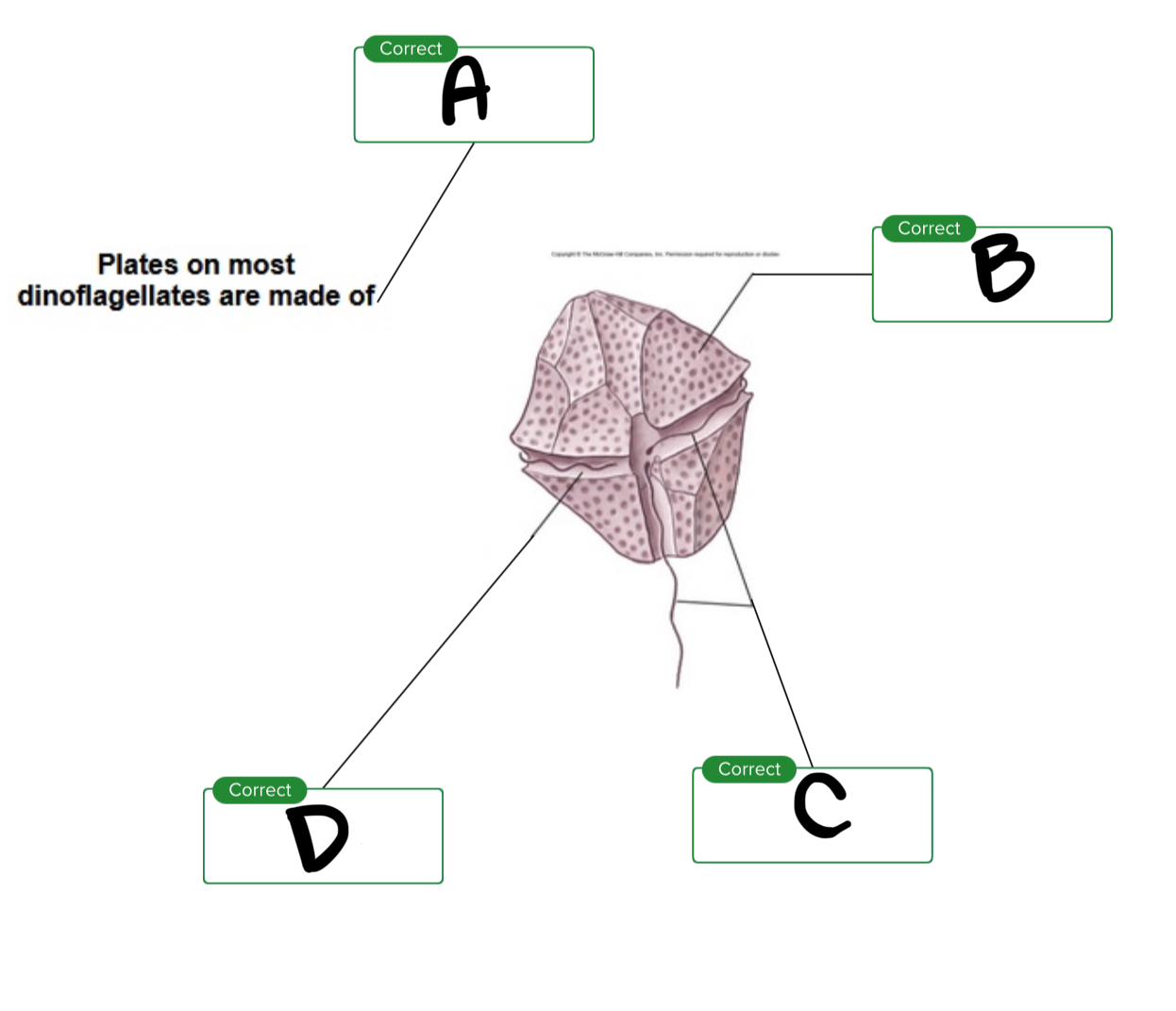
For the dinoflagellate, what is A?
Cellulose
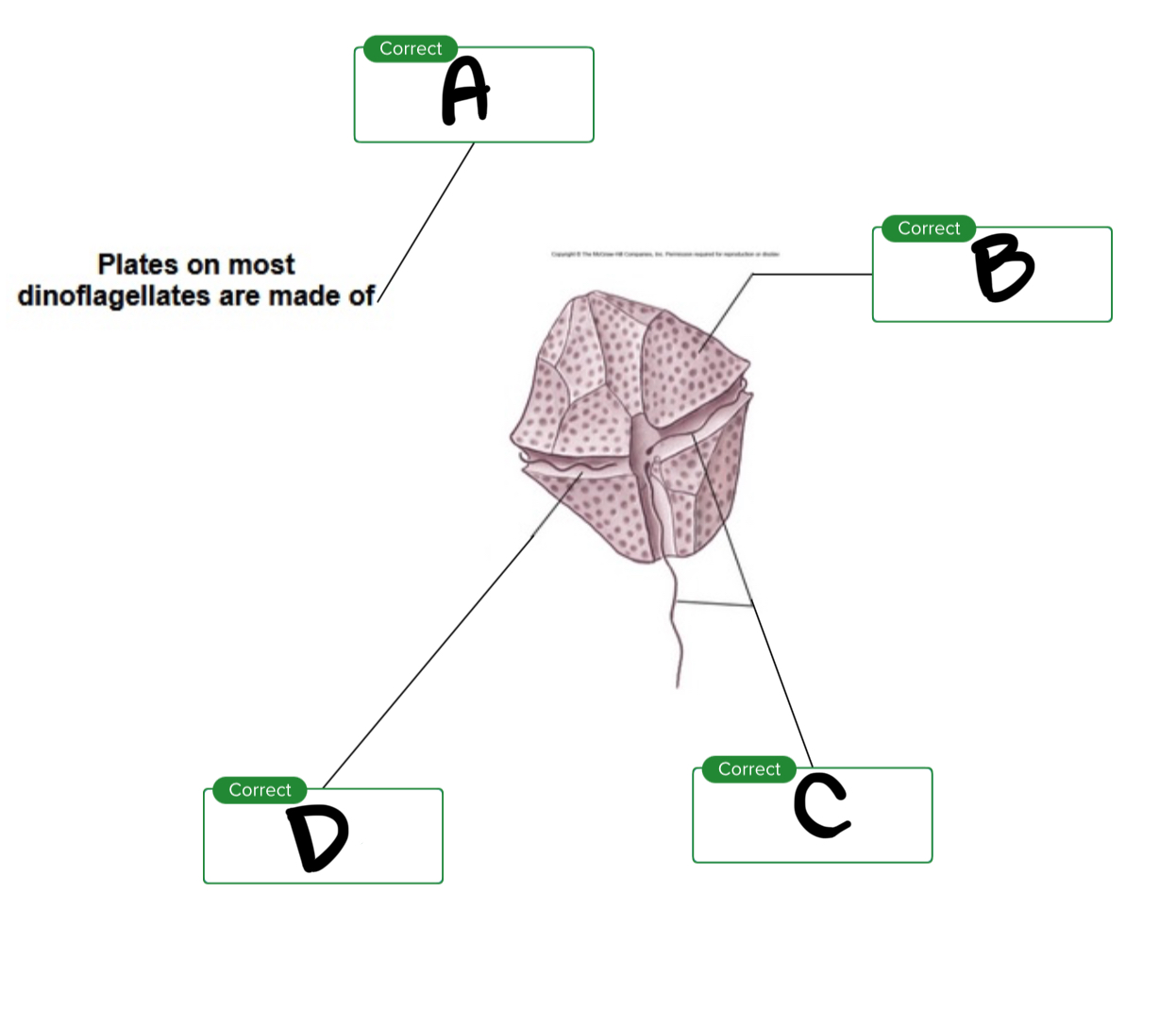
For the dinoflagellate, what is B?
Theca
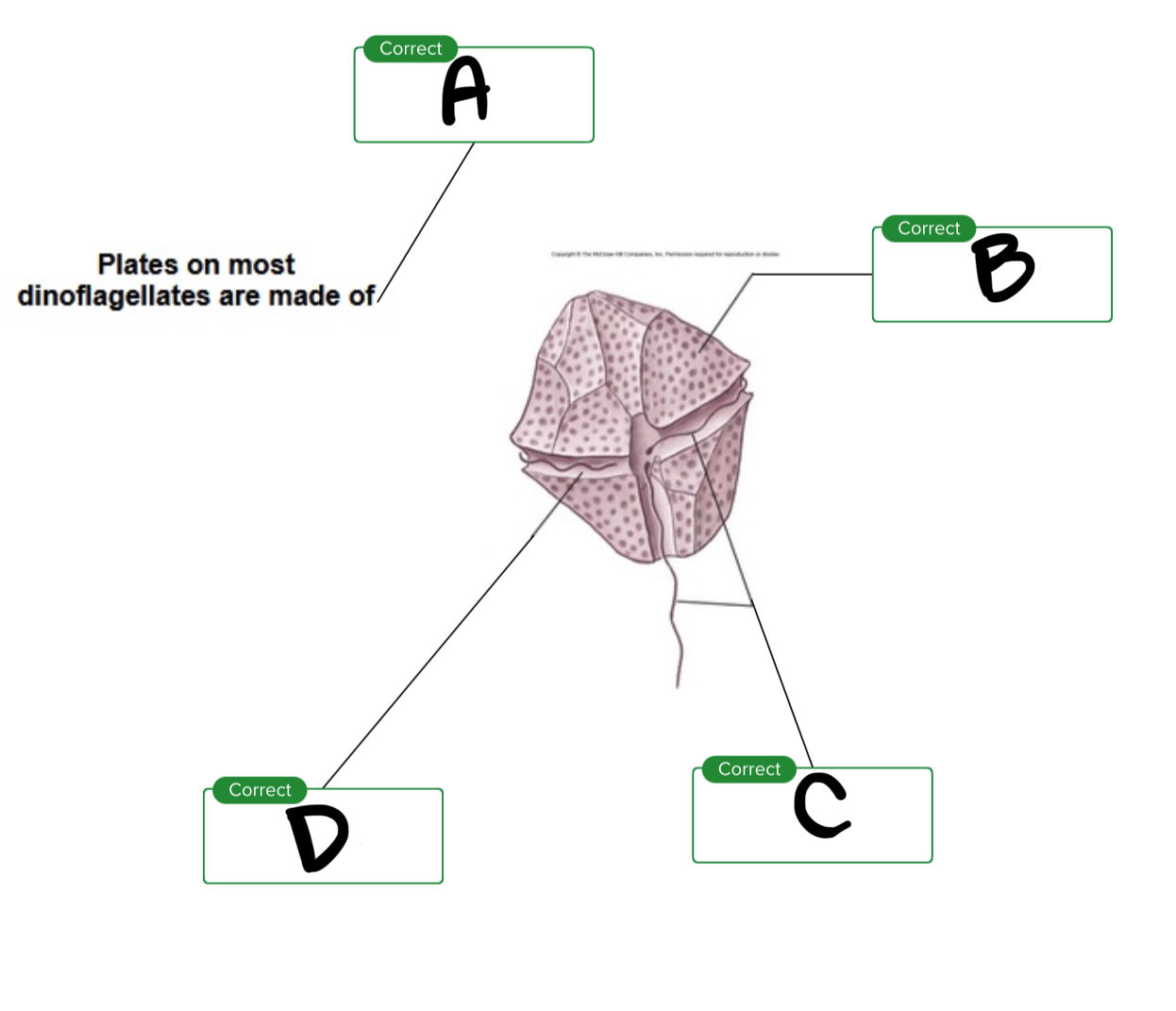
For the dinoflagellate, what is C?
Flagella
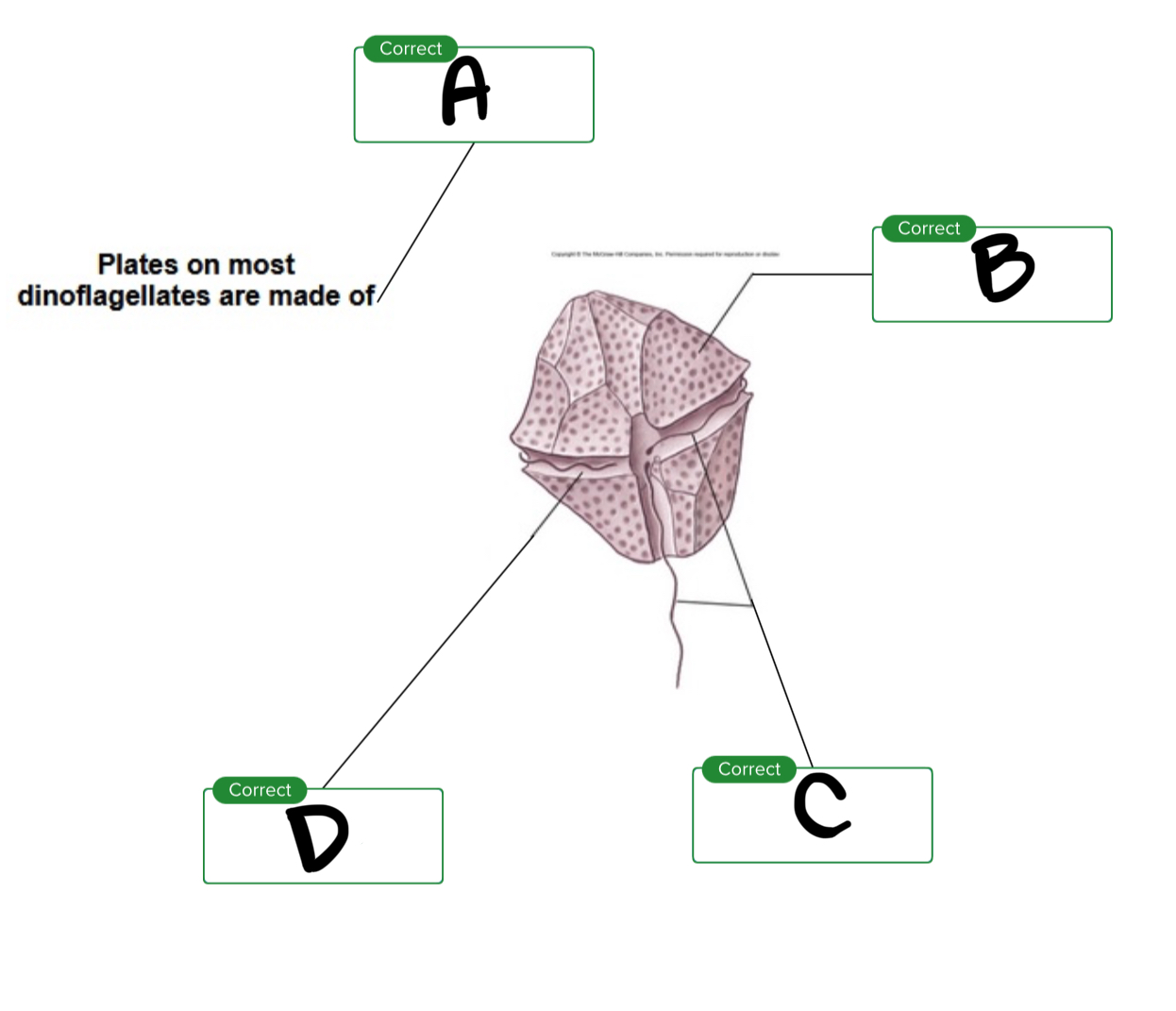
For the dinoflagellate, what is D?
Groove
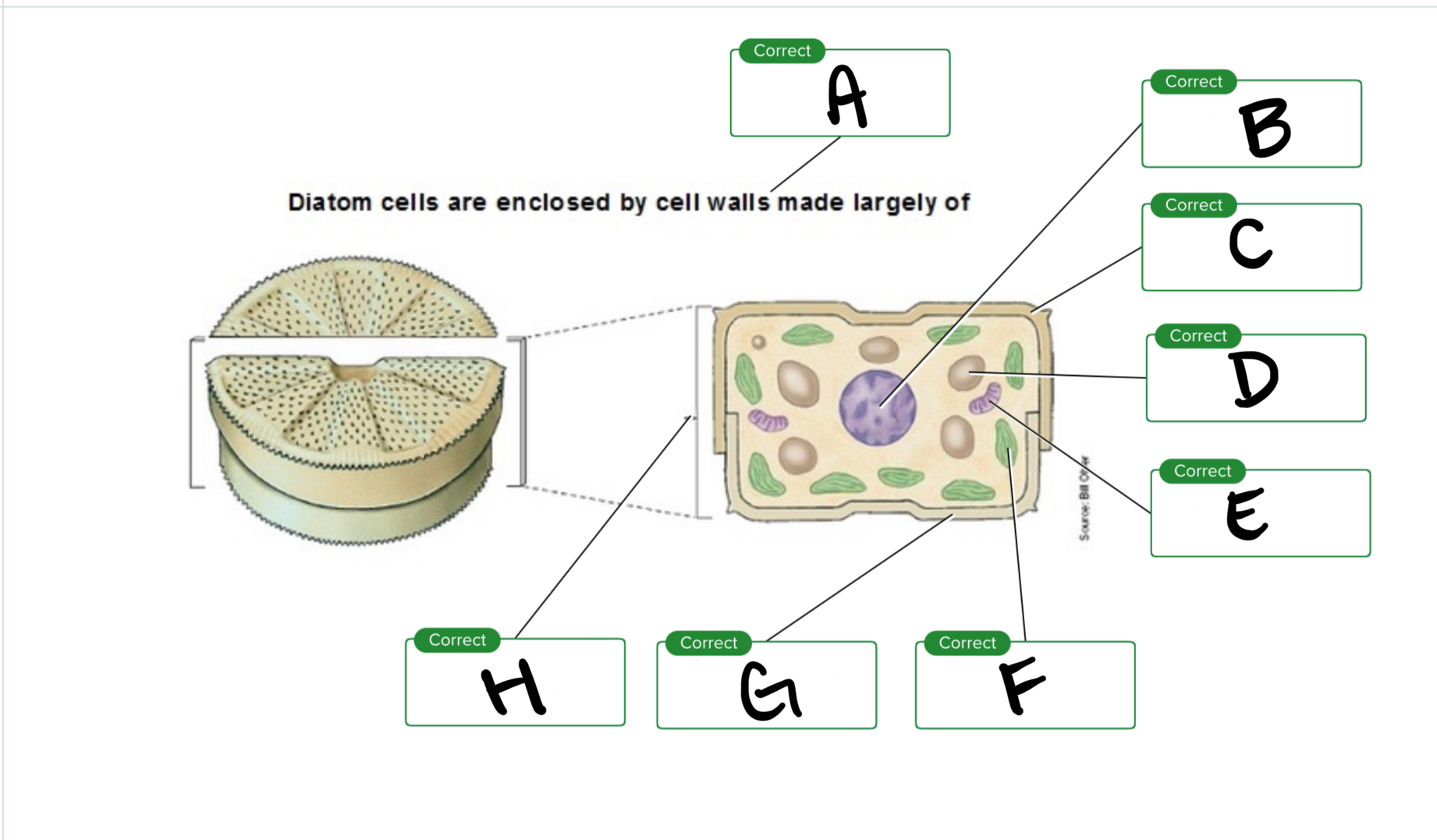
For the diatom, what is A?
Silica
For the dinoflagellate, what is B?
Nucleus
For the dinoflagellate, what is C?
Upper frustule (epitheca)
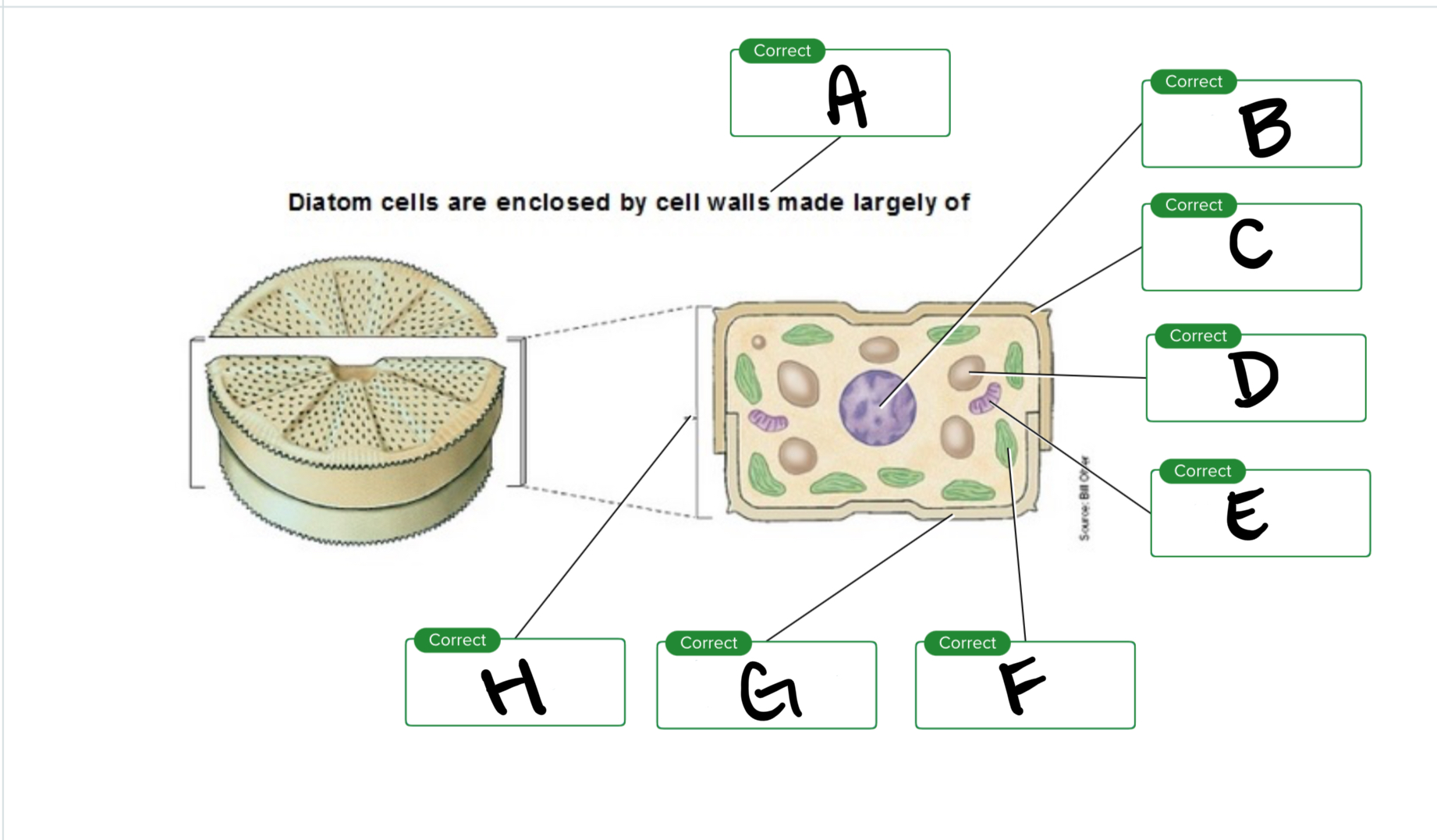
For the dinoflagellate, what is D?
Oil droplet
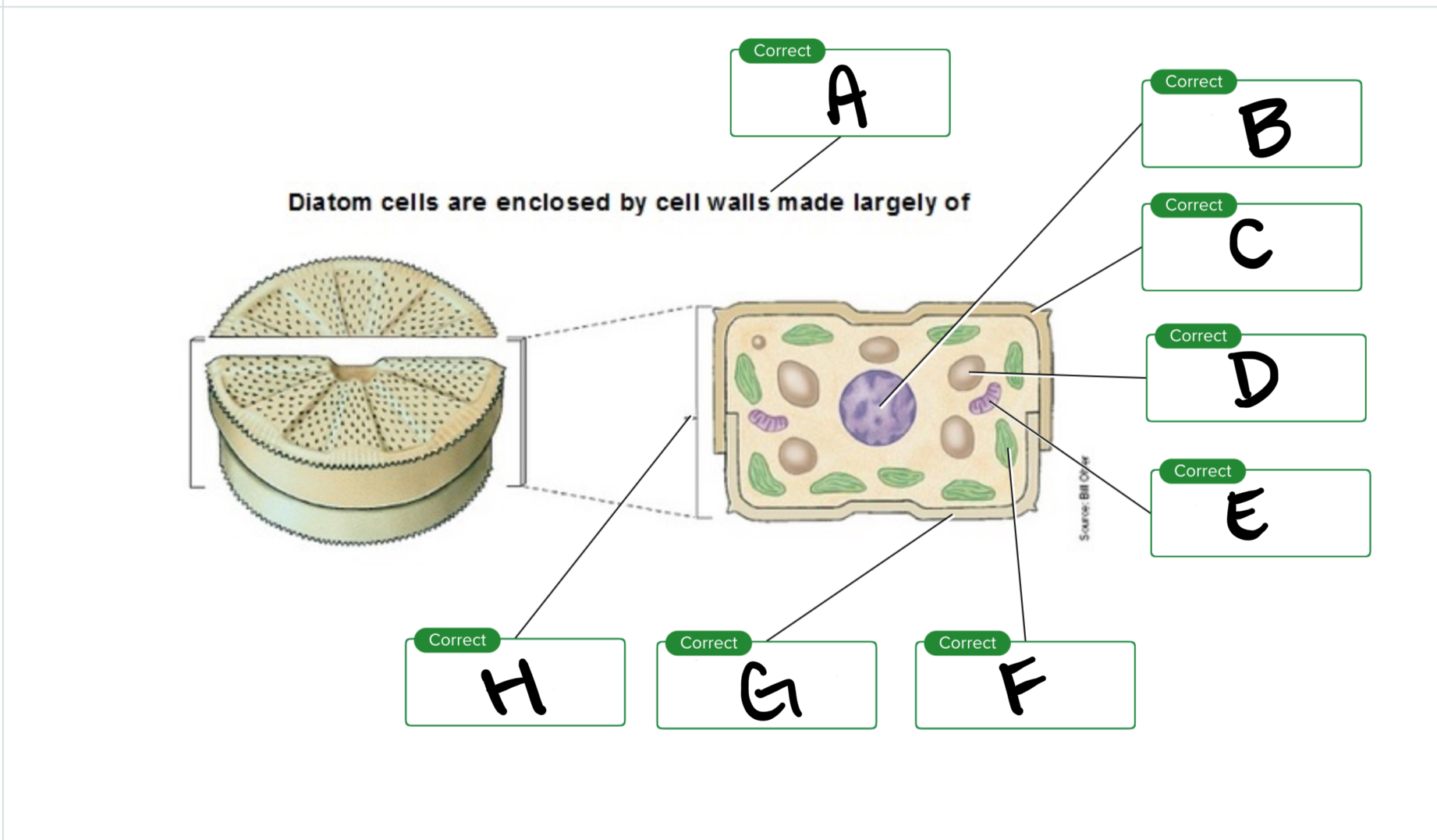
For the dinoflagellate, what is E?
Mitochondria
For the dinoflagellate, what is F?
Chloroplast
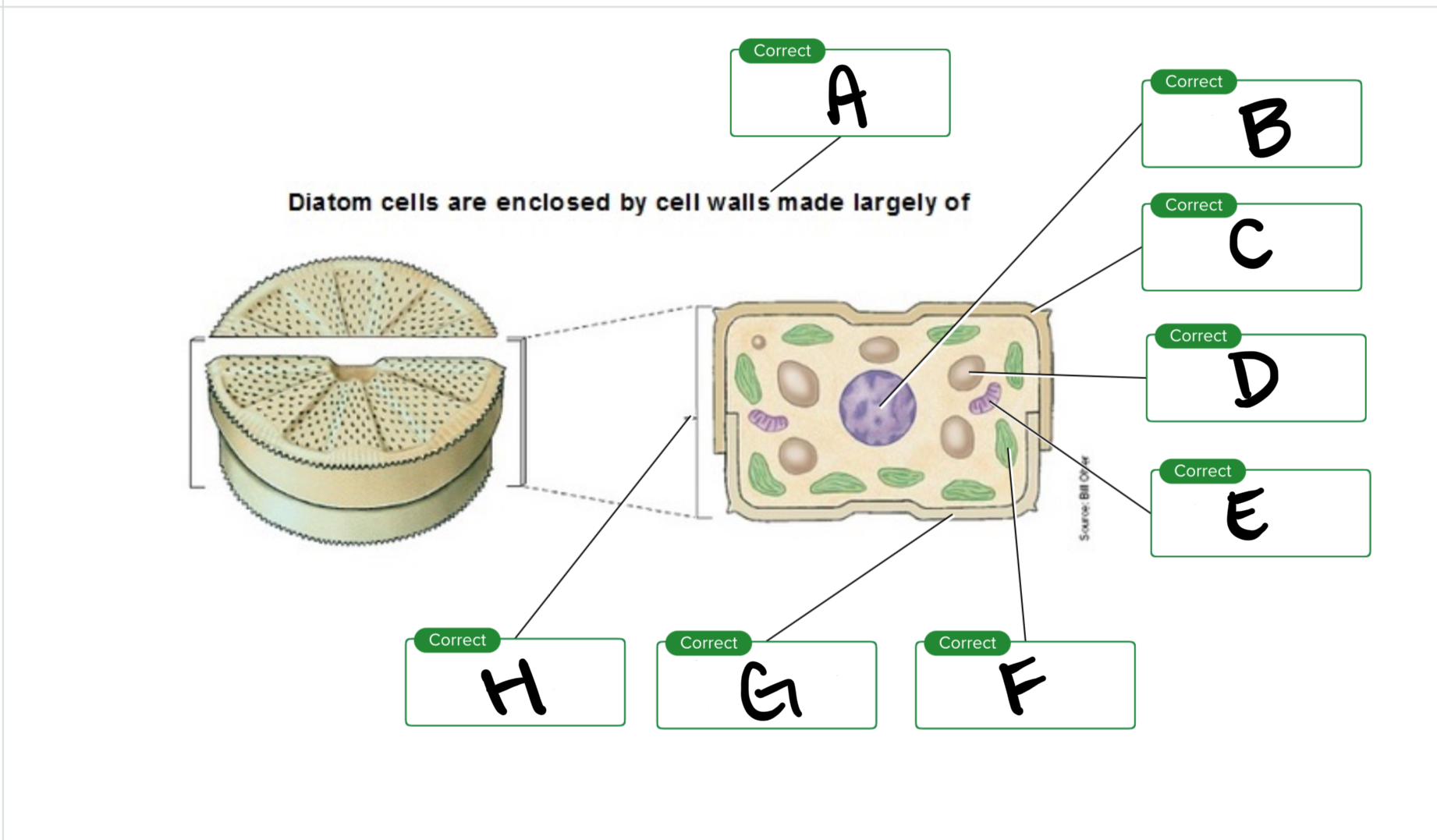
For the dinoflagellate, what is G?
Lower frustule (hypotheca)
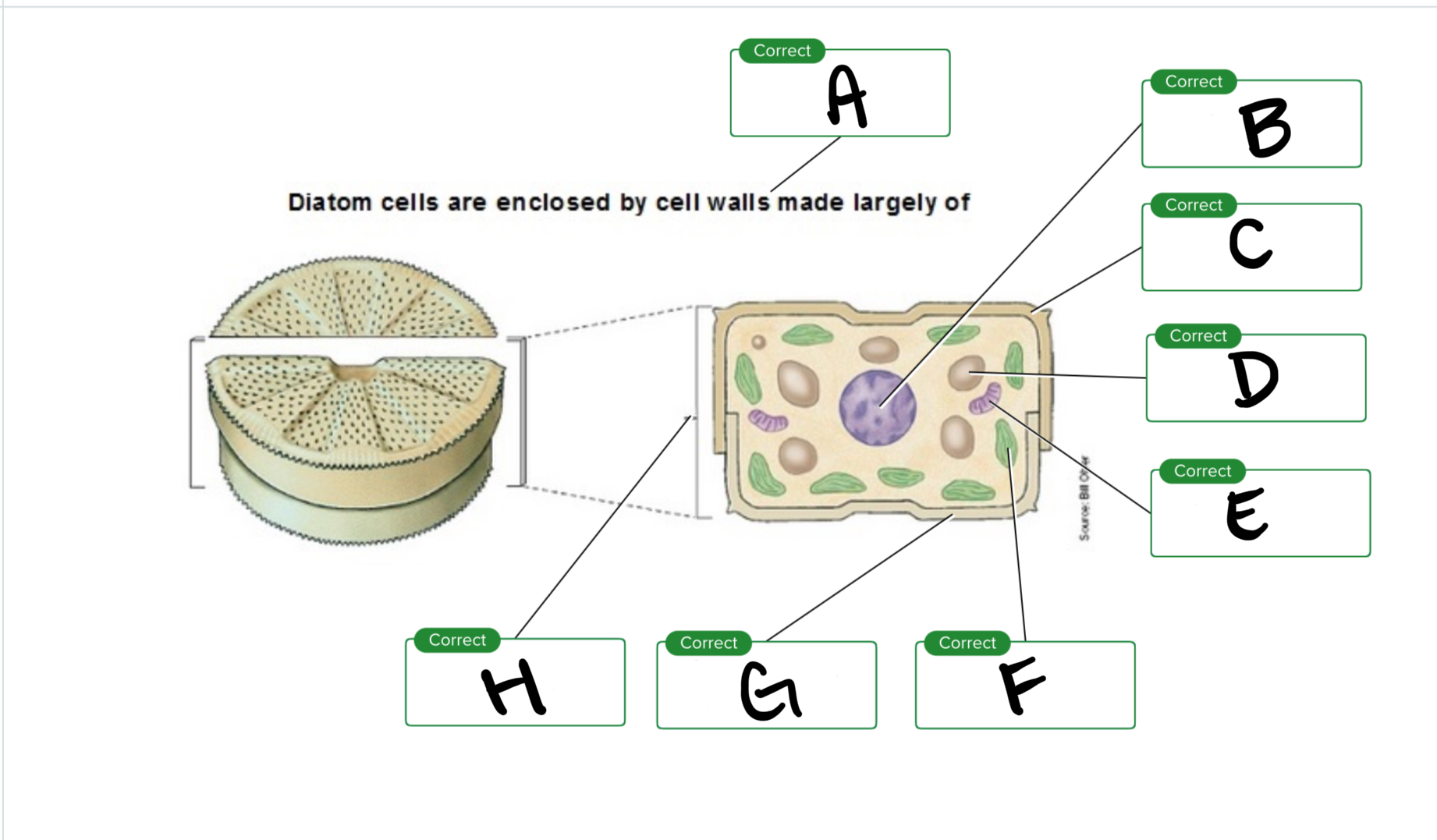
For the dinoflagellate, what is H?
Frustule
T/F Large stretches of ocean floor are covered by foraminiferan
True
T/F Foraminiferans are heterotrophic
True
T/F Foraminiferan skeletons are responsible for pink beaches in Bermuda.
True
T/F Foraminiferans are characterized by a silica shell.
False
T/F Radiolarian ooze contains silica and resists dissolving under pressure.
True
T/F Cilia are used by Tintinnids in locomotion and feeding
True
Protozoans are autotrophic prokaryotes
False
Biogenous sediments are made of the skeletons and shells of marine organisms
False
T/F Protozoans are the most animal-like of the protists.
True
T/F They are photosynthetic heterotrophs
False
T/F Some fungi cause diseases in seaweeds, shellfish, and fishes
True
T/F Fungi are very important primary producers in the marine environment
False
T/F Fungi can be unicellular or multicellular eukaryotes.
True
T/F They are important decomposers as they can digest cellulose
True
T/F Fungi are the most important decomposer of mangrove leaves
True
Some fungi live in symbiotic associations with coccolithophorids
False
T/F There are many more types of marine lichens than terrestrial lichens.
False
T/F A lichen is an entity composed of a fungus and an algae or cyanobacterium.
True